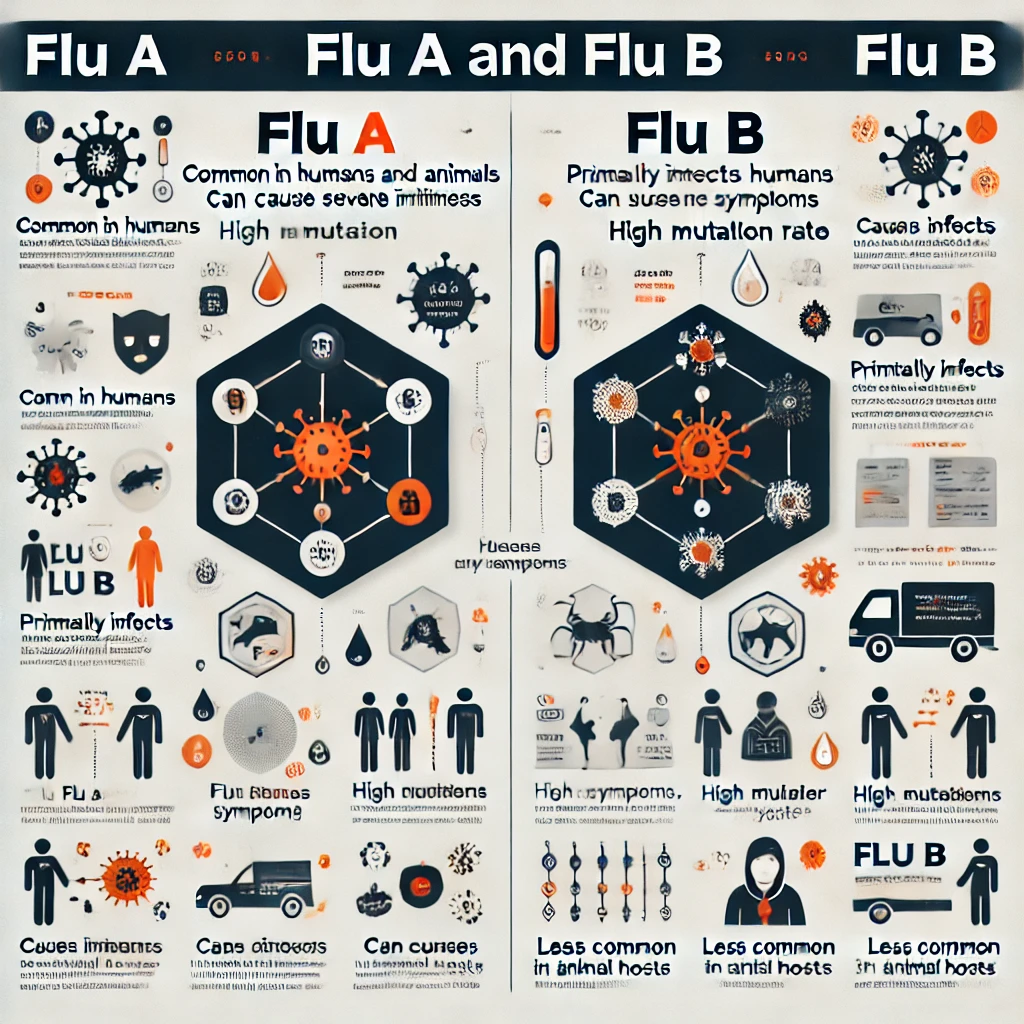
Flu A vs. Flu B: Key Differences, Symptoms, and Expert Advice
Introduction
Flu, short for influenza, sickens tens of millions of people every year. Flu A vs. Flu B: Key Differences, Symptoms, and Expert Advice Flu A vs. While similar, each type has its unique features that affect how severe they get, how contagious they are, and the way we treat them. Well, in this guide we will look at the differences between flu A, and flu B, the symptoms of each, and prevention and treatment methods recommended by experts.
Flu is an infectious respiratory sickness brought about by flu infections. It mainly infects the nose, throat, and, in some cases, the lungs. Symptoms of the flu can be mild or severe, and complications can include pneumonia, bronchitis, and hospitalization in some cases.
Flu A vs. Flu B: Key Differences, Symptoms, and Expert Advice Source: Getty Flu A vs. Flu B: Key Differences, Symptoms, and Expert Advice is an important topic for anyone in the audience looking to protect themselves and their families this flu season.
What Is Flu A?
Influenza A (Flu A): The flu A virus is highly contagious and infects humans and animals. It mutates quickly, creating new strains every year. Flu A is known for some of the following key features:
- Causes the vast majority of seasonal flu cases.
- Because it mutates quickly, can cause pandemics
- It is also found in birds, pigs, and humans.
- Flu A symptoms are usually worse than Flu B.
What Is Flu B?
Influenza B (Flu B) is another strain of the influenza virus and is an exclusively human pathogen. It mutates more slowly than flu A and does not produce pandemics. Key characteristics include:
- It mainly affects children and young adults.
- More likely to bring local epidemics than global pandemics.
- Symptoms are usually less severe than flu A but can still result in serious illness.
- So that it mutates less into new strains often.
Symptoms of Flu A and Flu B
The signs and symptoms of both types of flu are very similar. Flu A, however, is generally more severe. Common symptoms include:
- High fever
- Chills and sweats
- Cough
- Sore throat
- Muscle aches
- Fatigue
- Runny or stuffy nose
- Headache
Vomiting or diarrhea (are more likely in children)
“It’s important to realize these symptoms early to seek timely treatment,” experts say. If you have severe symptoms like trouble breathing, chest pain, or persistent dizziness, seek medical attention right away.
Prevention Methods
Flu Prevention: What Do You Need to Do? Here are strategies recommended by experts:
Vaccination
The flu shot is the best way to protect yourself from both flu A and flu B—and the CDC recommends that anyone 6 months and older get an annual flu shot.
Good Hygiene Practices
- Make certain to clean up frequently with cleanser and water.
- If there is no soap available, use hand sanitizer.
- Don’t touch your face, especially your eyes, nose, and mouth.
- Healthy Lifestyle Choices
- Eat a variety of foods with lots of vitamins and minerals.
- Sleep for a minimum of 7-8 hours daily.
- Go exercise; it helps raise your immune purpose.
Staying Clear of Sick People
Do your best to keep your distance if you know someone with the flu. Urge them to wear a mask to contain the virus.
The Best Treatments for Flu A and Flu B
If you do fall ill with the flu, early treatment can lessen the severity and length of symptoms. Experts recommend the following treatment methods:
Antiviral Medications
To reduce flu symptoms and prevent complications, doctors often prescribe antiviral medications like Tamiflu (oseltamivir) or Relenza (zanamivir). These medications tend to be most effective if taken within the first 48 hours of symptom onset.
- Over-the-Counter Medications
- Over-the-counter (OTC) medications can ease symptoms:
- Acetaminophen or ibuprofen for fever and body aches.
- Cough syrups or lozenges for a sore throat
- Kraynov has nasal sprays for congestion.
- Hydration and Rest
- Stay hydrated.
But get enough rest to also give your body time to recover sooner.
Managing the flu: Expert advice on its treatment and prevention
No one can say if we can avoid it, but medical experts are stressing the need to recognize flu symptoms early and to do everything possible to avoid a severe illness.
Here are some expert tips:
Dr. Emily Johnson, infectious disease specialist: “The flu vaccine is still the best way to protect yourself against both flu A and flu B. Even if you get sick, vaccination makes the symptoms less severe.”
Dr. Mark Stevens, pulmonologist: “Patients with chronic illnesses or compromised immune systems should take extra precautions during influenza season and seek medical attention at the first sign of symptoms.”
Conclusion
By reading “Flu A vs. Flu B: Differences, Symptoms, and Expert Advice,” you can be better prepared to prevent infection and understand what steps to take if you do contract influenza. Although both types of flu have some basic symptoms in common, flu A tends to be a bit more severe and has a higher mutation rate, so the potential for global outbreaks is much greater with flu A than it is with flu B. Taking these steps will help protect you against influenza-related sicknesses and keep you on your feet during the flu season.
